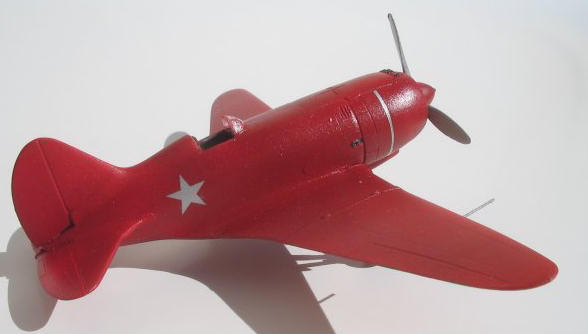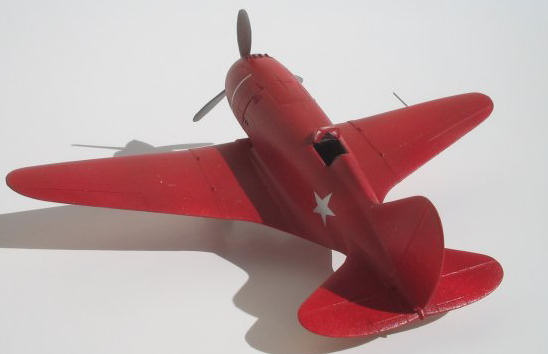
Amodel 1/72 Polikarpov I-180E-3
| KIT #: | 7283 |
| PRICE: | $12.46 several years back. |
| DECALS: | Three options |
| REVIEWER: | Brian Baker |
| NOTES: | Short run kit, but worth getting |

| HISTORY |
The Polikarpov I-180E-3 was a progressive development of the I-16 fighter
series.
In 1938, Polikarpov began to design a successor to the I-16, powered by
an M-88 radial engine. It followed the general lines of its predecessor, but was
cleaner aerodynamically and more powerful.
The first two prototypes crashed early in the test
program, and therefore, in the spirit of the times,
the NKVD
arrested the design team, who continued their work from prison.
In July, 1940, the I-180E-3 prototype appeared, powered
by an M-88P engine. It was successful enough that 13 were eventually built for
evaluation, although only 10 had full military equipment. With the availability
of the better performing MiG and Lavochkin fighters, the I-180 faded away.
There is no record of any of them being used in combat.
| THE KIT |
 The kit
consists of 36 parts molded in soft white styrene, with two canopies in clear
plastic.
There is some flash, but not much.
The kit is typical of Eastern European epoxy molded
kits.
There is a surprising amount of detail, including cockpit sidewalls and
a relatively complete interior.
The wing is made up of 3 panels, with the lower piece
extending wingtip to wingtip, which automatically assumes the correct dihedral
angle when attached to the fuselage.
Landing gear can be assembled in “up” or “down”
position, and gun barrels can be removed easily for modeling the unarmed
prototypes.
The kit
consists of 36 parts molded in soft white styrene, with two canopies in clear
plastic.
There is some flash, but not much.
The kit is typical of Eastern European epoxy molded
kits.
There is a surprising amount of detail, including cockpit sidewalls and
a relatively complete interior.
The wing is made up of 3 panels, with the lower piece
extending wingtip to wingtip, which automatically assumes the correct dihedral
angle when attached to the fuselage.
Landing gear can be assembled in “up” or “down”
position, and gun barrels can be removed easily for modeling the unarmed
prototypes.
Instructions
| CONSTRUCTION |
 The tail unit slides into the rear fuselage in a rather
unusual manner, but the kit is well designed and I experienced no problems
during assembly.
A little filler is required, but this is to be expected
in this type of kit.
The tail unit slides into the rear fuselage in a rather
unusual manner, but the kit is well designed and I experienced no problems
during assembly.
A little filler is required, but this is to be expected
in this type of kit.
| COLORS & MARKINGS |
Finishing this model is very easy, as you only have a couple of choices on this one. Color choices are overall silver or red. On one of the silver versions, the cowling and spinner are black, while the other example is red overall.
| CONCLUSIONS |
June 2010
Copyright ModelingMadness.com. All rights reserved. No reproduction in part or in whole without express permission from the editor.
If you would like your product reviewed fairly and quickly , please contact the editor or see other details in the Note to Contributors.